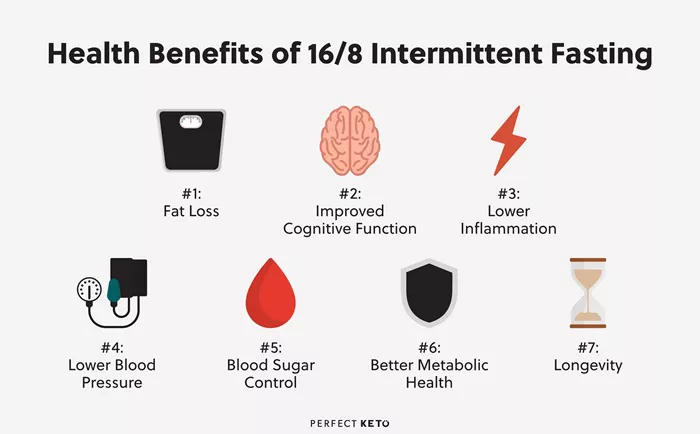Retinol, a derivative of vitamin A, has long been hailed as a powerhouse ingredient in the world of skincare. It offers a multitude of benefits, including reducing the appearance of fine lines and wrinkles, improving skin texture, and promoting collagen production. However, using retinol effectively and safely requires an understanding of what other products can be applied with it. In this article, we will explore the various skincare products that can be paired with retinol and the reasons behind these combinations.
Moisturizers
Moisturizers are essential when using retinol. Retinol can sometimes cause dryness and irritation, especially during the initial stages of use. A good moisturizer helps to counteract these side effects. Look for a moisturizer that is rich in hydrating ingredients such as hyaluronic acid. Hyaluronic acid has the ability to hold a large amount of water, keeping the skin plump and moisturized. For example, a simple gel-based moisturizer with hyaluronic acid can be applied after retinol. It will provide a lightweight yet effective layer of hydration. Another option is a cream moisturizer that contains ceramides. Ceramides help to repair and strengthen the skin’s natural barrier. When combined with retinol, they can protect the skin from moisture loss and external irritants. It is best to apply the moisturizer a few minutes after the retinol has been absorbed into the skin. This allows the retinol to do its job while the moisturizer then locks in the benefits and provides the necessary hydration.
Sunscreen
Sunscreen is an absolute must when using retinol. Retinol makes the skin more sensitive to the sun’s ultraviolet (UV) rays. Without proper sun protection, the skin is at a higher risk of sunburn, pigmentation, and premature aging. A broad-spectrum sunscreen with an SPF of at least 30 should be applied daily. Physical sunscreens that contain zinc oxide or titanium dioxide are a good choice. They work by sitting on top of the skin and reflecting the sun’s rays. Chemical sunscreens, which absorb the UV rays, can also be used. However, some people may have sensitivities to certain chemical sunscreen ingredients. When applying sunscreen after retinol, make sure to wait at least 15 – 20 minutes after the retinol has been absorbed. This gives the retinol time to work and also ensures that the sunscreen is applied evenly and effectively. Reapply sunscreen throughout the day, especially if you are spending a significant amount of time outdoors.
Antioxidants
Antioxidants can enhance the effects of retinol and provide additional protection for the skin. Vitamin C is a popular antioxidant that pairs well with retinol. Vitamin C helps to brighten the skin, reduce hyperpigmentation, and boost collagen production. It can be applied in the form of a serum before retinol. A 10 – 15% concentration of vitamin C is generally effective. For example, a lightweight vitamin C serum can be applied in the morning, followed by retinol at night. This combination allows the skin to benefit from the antioxidant properties of vitamin C during the day and the skin-renewing effects of retinol at night. Another antioxidant to consider is vitamin E. Vitamin E works in synergy with vitamin C to provide enhanced antioxidant protection. It can be found in some moisturizers or serums. When combined with retinol, it helps to protect the skin from free radical damage caused by environmental factors such as pollution and UV rays.
Gentle Cleansers
The type of cleanser used in a skincare routine with retinol is also important. Harsh cleansers can strip the skin of its natural oils, making it more prone to dryness and irritation when using retinol. Opt for a gentle, non-foaming cleanser. A cleanser with a pH-balanced formula is ideal. For example, a creamy cleanser that contains soothing ingredients like aloe vera or chamomile can be used. Aloe vera has anti-inflammatory properties, which can help to calm the skin. Chamomile is known for its gentle, soothing effects. These types of cleansers clean the skin without over-drying it, preparing it for the application of retinol. It is recommended to cleanse the face before applying retinol in the evening to remove any dirt, makeup, and excess oil.
Hyaluronic Acid Serums
As mentioned earlier, hyaluronic acid is great for hydration. A dedicated hyaluronic acid serum can be used in conjunction with retinol. Hyaluronic acid serums are usually lightweight and easily absorbed into the skin. They can be applied either before or after retinol, depending on personal preference and the specific formulation of the products. If applied before retinol, it helps to plump up the skin and provide a hydrated base. This can potentially reduce the likelihood of retinol-induced dryness. If applied after retinol, it replenishes the moisture that may have been lost during the retinol’s action. A serum with a concentration of around 1% – 2% hyaluronic acid is commonly used. It can be patted onto the skin gently and allowed to absorb fully before moving on to the next step in the skincare routine.
Niacinamide
Niacinamide, also known as vitamin B3, is another beneficial ingredient to pair with retinol. Niacinamide helps to regulate sebum production, improve skin tone, and reduce the appearance of pores. It has a calming effect on the skin, which can be helpful when using retinol, as retinol can sometimes cause redness or irritation. A niacinamide serum with a concentration of 5% – 10% can be applied. It can be used either in the morning or at night, depending on your skincare goals. If using it at night, it can be applied before or after retinol. Some people find that applying niacinamide after retinol helps to soothe any potential irritation. Niacinamide also works well in combination with other antioxidants and moisturizing ingredients, further enhancing the overall effectiveness of the skincare routine.
AHA/BHA Exfoliants
Alpha hydroxy acids (AHAs) and beta hydroxy acids (BHAs) are exfoliating agents that can be used in combination with retinol, but with caution. AHAs, such as glycolic acid and lactic acid, work on the surface of the skin to exfoliate dead skin cells, improving skin texture and brightness. BHAs, like salicylic acid, are effective in unclogging pores and treating acne-prone skin. However, when using these exfoliants with retinol, it is important not to overdo it. Over-exfoliation can lead to skin sensitivity and damage. It is recommended to use an AHA/BHA exfoliant a few times a week, and on nights when you are not using retinol. For example, you could use a glycolic acid toner on Monday, Wednesday, and Friday nights, and retinol on Tuesday, Thursday, and Saturday nights. This allows the skin time to recover and reduces the risk of irritation. When using an AHA/BHA exfoliant, always follow up with a good moisturizer and sunscreen, as the exfoliated skin is more vulnerable to environmental damage.
Peptides
Peptides are chains of amino acids that can have a positive impact on the skin. They can help to boost collagen production, improve skin firmness, and reduce the appearance of wrinkles. When combined with retinol, peptides can enhance the anti-aging effects. Peptide serums can be applied after retinol. A serum with a combination of different peptides, such as matrixyl and argireline, can be effective. These peptides work by signaling the skin to produce more collagen and elastin. They are generally well-tolerated by the skin and can be a great addition to a retinol-based skincare routine. For example, after applying retinol and waiting a few minutes, a peptide serum can be gently massaged into the skin, followed by a moisturizer.
Eye Creams
For the delicate skin around the eyes, a specific eye cream can be used in combination with retinol. The skin around the eyes is thinner and more prone to dryness and wrinkles. An eye cream that contains retinol can be used to target fine lines and wrinkles in this area. However, it is important to choose an eye cream that is formulated for the eye area and is gentle. Some eye creams also contain additional ingredients such as caffeine, which can help to reduce puffiness, and peptides for firming. When applying eye cream with retinol, use a small amount and gently pat it around the orbital bone. Do not apply it too close to the eye itself to avoid any potential irritation.
Facial Oils
Facial oils can be used with retinol, but again, caution is needed. Some facial oils, such as rosehip oil and argan oil, are rich in antioxidants and fatty acids. They can provide additional nourishment and hydration to the skin. However, not all facial oils are suitable for use with retinol. Oils that are comedogenic, meaning they can clog pores, should be avoided. When using a facial oil with retinol, it is best to apply it after the retinol has been absorbed and after applying a moisturizer. A few drops of a non-comedogenic facial oil can be gently pressed into the skin. This can help to seal in the moisture and give the skin a healthy glow. For example, if you have dry skin, you might find that using a small amount of argan oil after your retinol and moisturizer application helps to keep your skin soft and supple.
Conclusion
In conclusion, using retinol effectively involves carefully selecting and combining it with other skincare products. Moisturizers, sunscreens, antioxidants, gentle cleansers, hyaluronic acid serums, niacinamide, AHA/BHA exfoliants (used with caution), peptides, eye creams, and some facial oils can all play a role in a comprehensive retinol skincare routine. By understanding the properties and benefits of each of these products and how they interact with retinol, you can create a personalized skincare regimen that maximizes the benefits of retinol while minimizing the potential for side effects. Remember, consistency is key in skincare, and it may take several weeks or even months to see the full results of using retinol and its accompanying products. Always patch test new products and consult a dermatologist if you have any concerns or pre-existing skin conditions.
Related topics:
What Step Is Retinol In Skin Care?



































